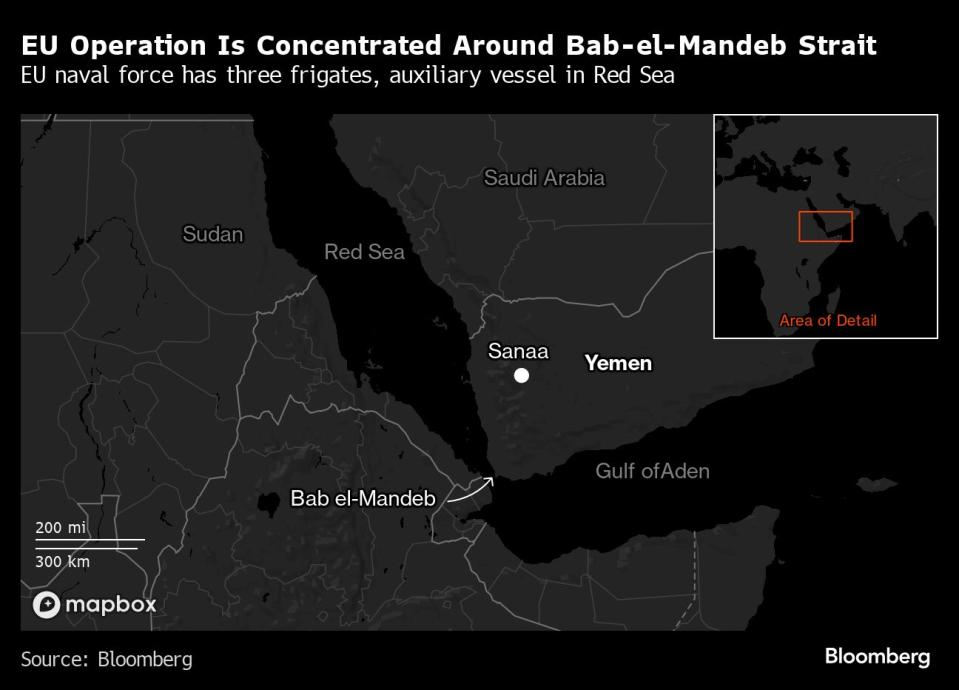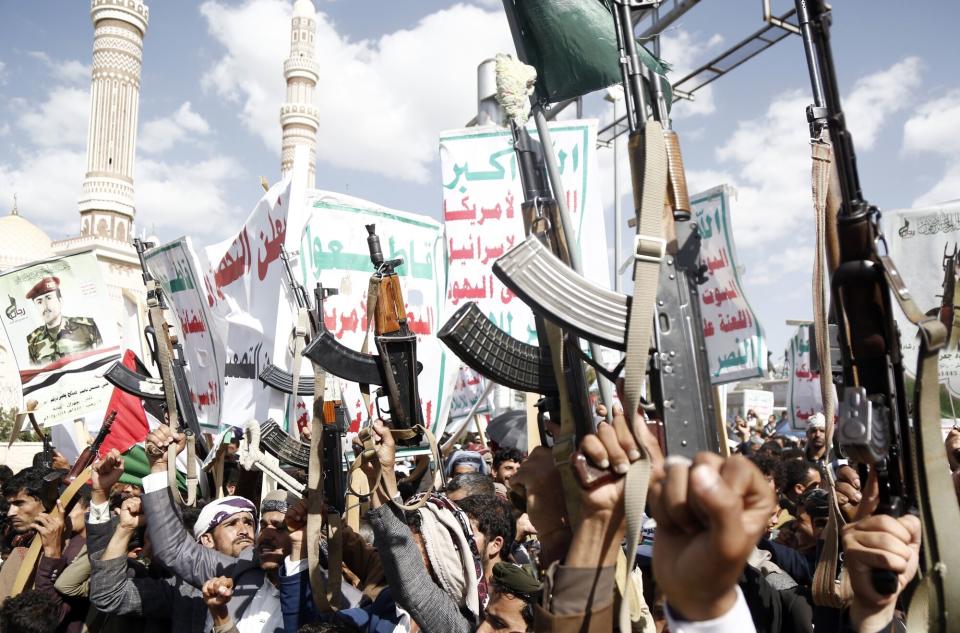Fending Off Houthis Requires Double the Fleet, EU Force Says
(Bloomberg) -- A naval force deployed by the European Union to protect vessels in the Red Sea needs to more than double in size because of escalating attacks by Iran-backed Houthi rebels, the head of the operation said.
Most Read from Bloomberg
At Blackstone's $339 Billion Property Arm, the Honeymoon Is Over
CDK Tells Car Dealers Their Systems Will Likely Be Down for Days
Putin’s Hybrid War Opens a Second Front on NATO’s Eastern Border
Four EU vessels have been patrolling the waters off the coast of Yemen since February. In that time, they’ve provided “close assistance” to 164 ships, shot down more than a dozen unmanned aerial vehicles and destroyed four anti-ship ballistics missiles, Rear Admiral Vasileios Gryparis said in an interview on Wednesday.
The Yemen-based Houthis began attacking vessels last year to pressure Israel and its allies over the war in the Gaza Strip. Their campaign has roiled global shipping, forcing many vessels to sail thousands of miles around southern Africa instead — despite the EU operation and US and UK bombing that began in January.
A warning by the Yemen-based Houthi movement last month that it will target ships owned by companies that dock a single vessel in Israel has increased the risk for commercial shippers, Gryparis said. He was in Brussels this week to lobby for additional resources.
“We don’t have that many assets and the whole area we have to cover is enormous,” he said. “I am pressing all the member states to provide more assets.”
The US Navy has an aircraft carrier strike group in the region, including the USS Dwight D. Eisenhower carrier and three warships, according to website military.com.
Last week, the militants struck the coal-carrying Tutor with a seaborne drone, killing a Filipino crew member. The ship sank on Thursday.
US and UK bombing campaigns have failed to stop the attacks and instead led to vessels associated with the two countries being targeted more often. The Houthis have warned of an expanded operation to potentially attack ships in the Mediterranean Sea, though they’ve shown little evidence they can hit ships that far away.
The EU mission has a defensive mandate and any increase in the size of its fleet patrolling the Red Sea would be to enable the force to increase its geographic range, rather than adopt a more confrontational stance, Gryparis said.
‘Hitting the Houthis’
“We don’t believe that hitting the Houthis might solve the problem,” he said. “Some other countries tried similar actions some years ago and some other countries still do and we see that it is not contributing to the solution to the problem.”
The limited number of vessels at its disposal has confined Operation Aspides to a small part of the southern Red Sea, near the Bab-el-Mandeb Strait between Yemen and Djibouti — a choke point where ships are especially vulnerable to attacks.
“There are daily about 40 or 50 ships going up and down the strait so it needs a significant amount of ships to be able to provide this close protection,” he said. “There are cases where we are not able to provide this close protection but we try and cope with the volume.”
Operation Aspides’ current mandate ends in February 2025, though Gryparis said he expects it to be extended.
EU foreign service spokespeople didn’t respond to an emailed request for comment.
--With assistance from Jeremy Diamond and Christian Miller.
Most Read from Bloomberg Businessweek
©2024 Bloomberg L.P.

 Yahoo Finance
Yahoo Finance 

